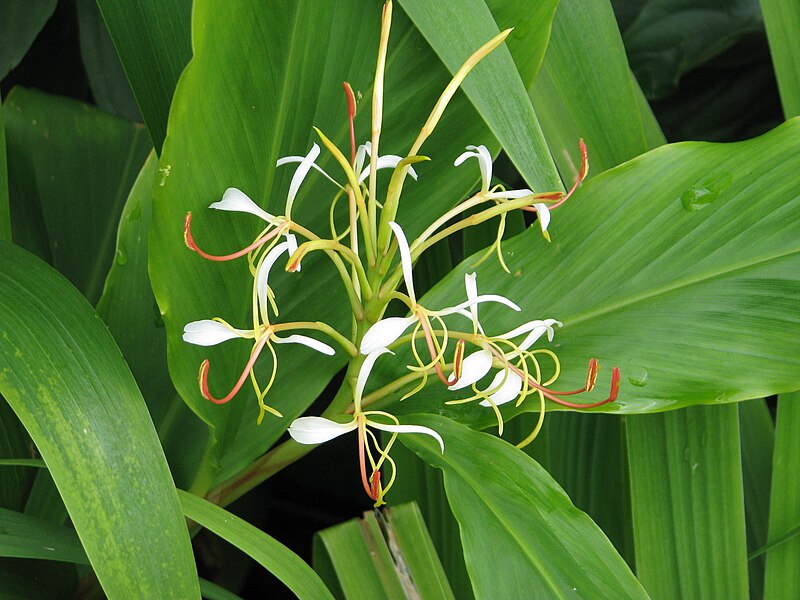Ginger Lily aka Hedychium Essential Oil
Hedychium spicatum steam distilled from the fruit in India. It is also commonly known as the spiked ginger lily or perfume ginger; with foreign names of sandharlika संधार्लिका (Hindi), kapur kachri कपूर कचरी (Hindi), and takhellei (Manipuri), Cao Guo Yao 草果药 (Mandarin), afer kocher (Amharic).
Aroma: A middle note with a medium aroma, hedychium essential oil has warm woody notes with a hint of spice and a soft floral touch.

Common Uses: The aromatic dried root of this plant is often used as an incense in Ethiopia. Hedychium essential oil is used in perfumery and has therapeutic properties such as carminative, stimulant, tonic, antiseptic, anti-inflammatory, antibiotic and antiasthmatic. The aromatic oil has antifungal as well as antibacterial effects. {Antimicrobial activity and chemical composition of essential oil from Hedychium coronarium Authors Beena Joy, Akhila Rajan, Emilia Abraham First published: 23 January 2007}
History: Hedychium spicatum is a plant species native to China (Guizhou, Sichuan, Tibet, Yunnan), the Himalayas, Myanmar, Thailand and Ethiopia. The genus name Hedychium is derived from two ancient Greek words, hedys meaning "sweet" and chios meaning "snow". Traditionally, an extraction of the root is used in Ayurvedic medicine as an anti-nausea agent. Research indicates that the oil has a slightly tranquillizing action, as well.
Colour: Olive brown to olive green slightly viscous liquid.
Consistency: Thin
Perfumery Note: Middle
Strength of initial aroma: Medium
The major components of the essential oil from fresh and dried Hedychium coronarium rhizome are: 1,8-cineole 41.42% - 37.44%, β-pinene 10.39% - 17.4%, linalool, terpinen-4-ol, α-terpineol 8.8% - 6.7%, 10-epi-γ-eudesmol, β-eudesmol, β-selinene, α-selinene, elemol, α-cadinol.
Cautions: Dilute before use; for external use only. May cause skin irritation in some individuals; a skin test is recommended prior to use. Contact with eyes should be avoided.
Photo by peganum from Henfield, England (Hedychium spicatum Ciaojiang) [CC BY-SA 2.0 (https://creativecommons.org/licenses/by-sa/2.0)], via Wikimedia Commons


